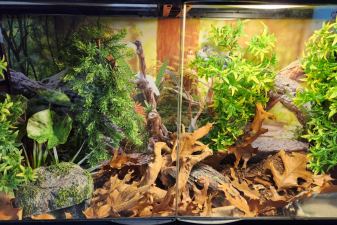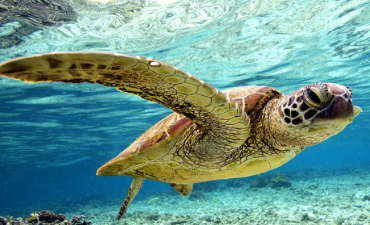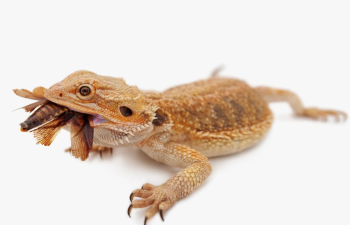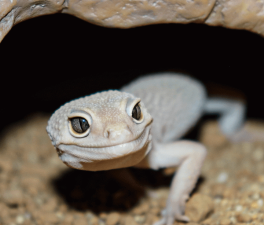Provide a Clean, Comfortable Habitat

Provide a Clean, Comfortable Habitat

- Create the right habitat.
For baby snakes, a 10-gallon (37.9-liter) tank with a heating pad placed 1/3 of the way down is perfect. If you choose to keep your baby snake in a larger aquarium, add more hiding places so it feels safer. Set it up a few days before purchasing the snake so the temperature can be regulated.
When a snake is purchased as a baby, it should be placed in a small vivarium, gradually increasing the size of the vivarium as the snake grows. If a small baby snake is placed directly into a large vivarium, it will become territorial and attack anyone who comes close to it, and will most likely bite them. Keeping baby snakes in a small vivarium also ensures that they can easily find the food you place for them.
Keep only one snake in each tank, as they may become aggressive if kept together.
- Decide where your vivarium will be set up.
For easy viewing and contact, place it high enough to observe, but low enough to reach in. Don't place the fish tank near a window or other poorly ventilated areas, as this may have a big impact on the temperature.
Also remember that you should place your snake's home where it will not be disturbed by other pets or children.
- Temperature control:
Temperature is the lifeline of pet snakes! Keep it at 28-30℃ during the day and lower it by 2-3℃ at night. You can use a heating pad or ceramic heating lamp to maintain a constant temperature. However, please note that different snake species have different requirements for temperature, and you have to adjust it according to the "taste" of your baby snake.
- Humidity management:
Humidity is also very important! Generally, it is good to keep it at around 40%-60%. If the humidity is insufficient, remember to spray some water to increase the humidity.
- Bedding selection:
Bedding materials cannot be chosen casually! Kitchen paper and poplar wood chips are good choices, but avoid using bedding materials that are easy to cause allergies or accidental ingestion.
- Feeding frequency:
Small snakes are usually fed once a week, and adult snakes are fed once every 1-2 weeks. The food is mainly small white mice and suckling mice. Do not disturb them within 24 hours after feeding, let them enjoy the food!



